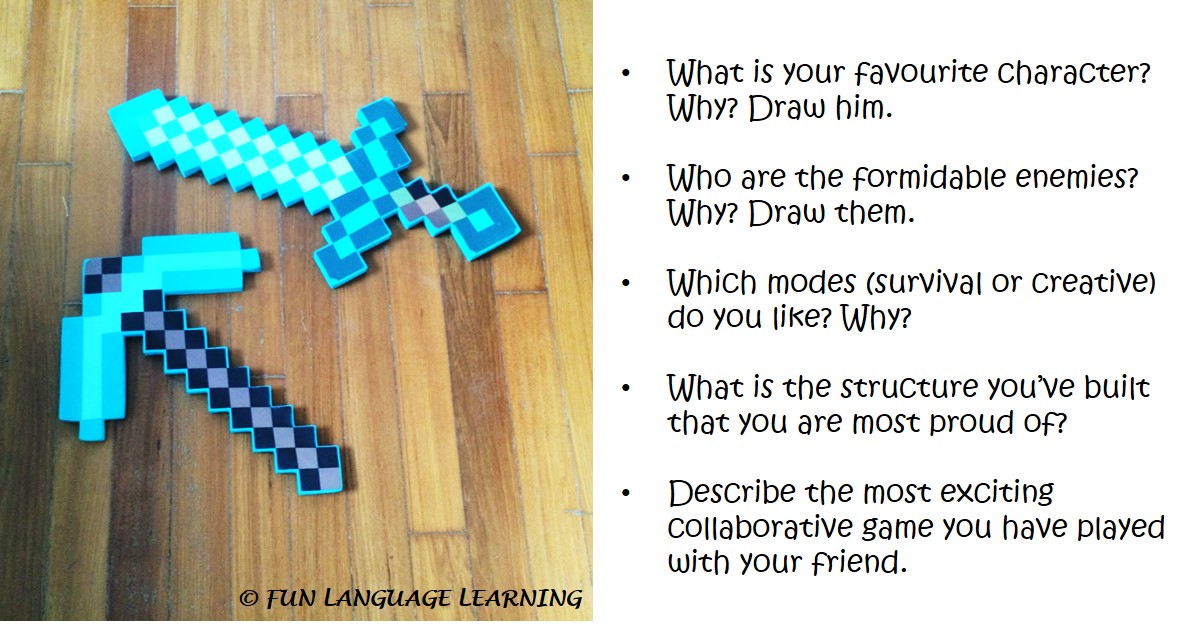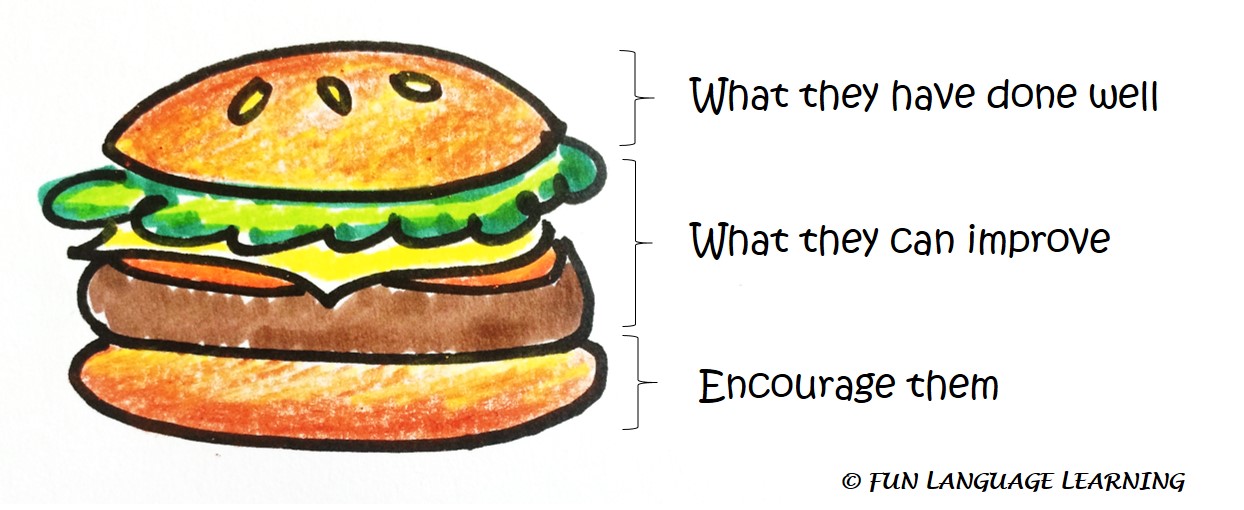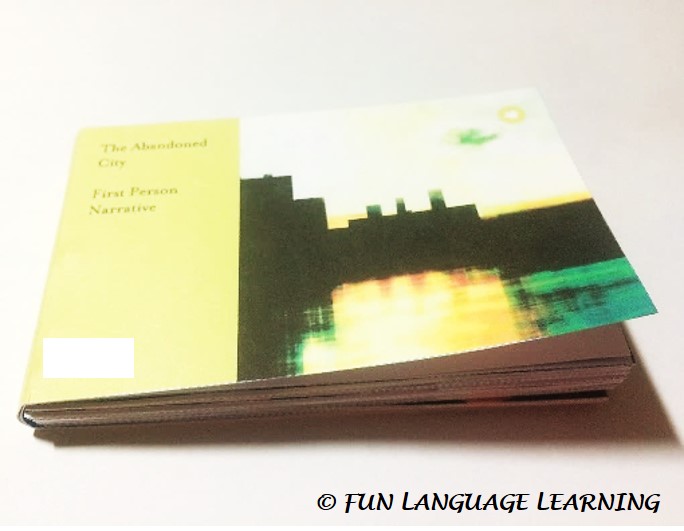Do you always find yourself in a tug-of-war when you ask your children to practise writing their composition or essay?
“Okay.” And they carry on with what they are doing.
“I still have homework to do.” And they get ‘busy’.
One day. One week. One month has passed and the writing pad is still collecting dust. When you nag at remind them, they scrunch up their faces and just refuse to budge. What begins as a friendly request soon escalates to an ugly quarrel.
It’s really frustrating.
And tiring.
When your efforts are one-sided.
It’s as if you own their work!
The truth is, we teachers also face the same problem with students.
Many children find writing a chore. It’s something adults want them to do. We see the benefit of practising writing but to them, it’s just repetitive and boring.
Being averse to writing, they write sloppy pieces, or worse, they avoid doing it altogether. Then we chase them for their work. The cycle repeats. When it’s time for exams, they pick up their pens and cook up something incoherent. As for the results, you and I don’t have to spell them out.
Is there no hope then?
Not quite.
Through my years of teaching and interacting with students, I have discovered essential elements that must be present for them to overcome the inertia of writing.
First of all, you have to be aware that writing comprises of these 3 main stages:
Three stages of writing
So how do we help them in the 3 stages of writing?
Here are 7 strategies I’ve successfully used or found evidence that they work. They can be easily applied to encourage children to write.
In a rush? Let me send you The Ultimate Guide: How To Motivate Your Child to Write, the free e-book with these 7 strategies + 2 bonus tips + a checklist of activities that help your children improve their writing.
Pre-writing
1. Discuss the topic with them
Students are almost always given a topic to write. This is what happens when they aren’t:
A rambling journal entry of a 16-year-old
However, if we spring a topic on students and expect them to write something ingenious, chances are they are going to stare at us blankly and say, “I have no idea.” Even adults have this nemesis—the writer’s block.
Aren’t they given pictures, guiding questions and helping words in their exams?
In primary school, students are given more guidance in the form of images, guiding questions and helping words (especially in lower primary). In secondary school, they are given the topic and less guidance. One thing is for sure—they are expected to show maturity in their work and think on their own feet as they grow older.
Even though they are given guidance, some students are still stuck.
Why?
They simply don’t have enough life experiences they can tap on that are related to the topic!
Let’s consider this topic: a painful lesson.
At a glance, it looks easy but how many students have personally experienced one? To them, getting reprimanded is painful enough. Thus, a lot of them write about making a mistake and getting scolded. To the examiners, it’s not painful enough. The consequence has to be more severe (a blow) than mere scolding (a pinch) for it to be painful. Maybe they have inflicted irreversible damage on somebody. Maybe they have suffered a loss. Or maybe they have to live with the consequence forever.
This is where getting more exposure and paying attention to the little things around us come into play. We can’t experience everything but we can learn from other people’s experiences.
If you find that your child has difficulty relating to a topic, take a step back. Read a story or news article with them. Watch a video together. Link these back to the topic and discuss with them.
In the case of a painful lesson, I would share with them, reports of people who fell victim to scams and lost their hard-earned money. Then, I’ll invite them to think about important things they have lost and how they feel.
Information is all around us
With some background information, they can brainstorm better ideas for writing. This kick-starts their engine and ‘Boom!’ they can start to write.
Writing
2. Keep a scrapbook of their writing
I do this with my students and they love that they are creating something they can keep. Most of them forget they are writing when it’s presented as the garnish that accompanies simple craftwork. It’s not stressful. Neither is it just a pointless fun activity.
Let’s see the example below:
Bilingual writing activity by my 10-year-old student
This was done after a pre-writing activity. My student and I read a story about a rabbit which explored its owner’s house and made a mess of the place when he’s not around. After that, I asked her to show the rabbit’s feelings in writing. Instead of saying “The rabbit is excited” or “The rabbit had some fun,” she chose a few scenarios and created its thoughts with authentic words.
Isn’t this too easy for a 10-year-old?
I beg to differ. Showing details in writing is a vital skill to develop yet many students are still struggling with this. They need to practise doing this in different contexts so that they can internalise it and eventually use it in their writing.
Notice that my student also wrote in Chinese. Many Singaporean students are more accustomed to speaking English than Chinese. Sometimes they have ideas they can express in English but not in Chinese. “How do I say ‘roller blading’ in Chinese?” they may ask.
I’ve done such activities with students from as young as 7 years old to as old as 12 years old, albeit with some adjustments to the difficulty level. They are equally enthusiastic. The best part is, you can collect their work and marvel at their growth over time.
3) Engage them in authentic writing
Sometimes, there’s no need to give a topic for writing. No, I’m not contradicting myself. I’m referring to a form of writing that is spontaneous.
Personally, I know a loving mother who leaves notes for her daughter. Her intention is not for her daughter to practise writing, but because both of them enjoy receiving notes, they brighten each other’s day through such writing. There are times when they get upset with each other but they would read the notes they have written to remind themselves that they love each other. Aw…
When I first saw her post on Facebook, I thought to myself, “What a great activity for parent-child bonding! I must share this effective way of communication with more parents!” Thus, I asked her for permission to share it:
Two-way exchange between an 11-year-old and her mother
The teacher in me also wants to illustrate a learning point here.
This is the perfect practice for situational writing!
As you know, situational writing is part of the writing exam in which primary and secondary school students are required to write a letter, email, proposal or speech to a particular audience.
I’ve seen many students use an inappropriate tone and register in their situational writing. “Do you speak to your friend like this?” I ask them whenever I spot such a problem. “No,” they reply. Then why do they use awkward formal expressions in a letter to a friend? It turns out that quite a handful has not written a real letter to anybody before.
So parents, leave thank-you notes for your children. Write letters to them once in a while. Just as they love pretend-play, they enjoy mimicking adults’ actions. They are likely to write back if you start the ball rolling. For busy parents, this is an excellent way to show concern for your child.
By the way, text messages are different from handwritten notes. We tend to use a lot of abbreviations in text messages and can’t include drawings like those in the notes. There’s just a lack of human touch so go for handwritten ones as much as you can.
4) Let them write about something that interests them
Raise your hands if your children are interested in Minecraft.
Do you find that they play Minecraft, talk Minecraft, eat Minecraft and breathe Minecraft? There are Minecraft-themed cakes, so technically, they can eat Minecraft but I’m not too sure about the breathing part. Anyway, you get the idea—they research all things Minecraft WITHOUT being told to do so.
Well, I don’t really understand the Minecraft craze. But you know what? We don’t have to.
Let them teach us about it. Ask them to share some details and findings in writing.
For Minecraft fanatics
Most importantly, you need to be genuinely interested when they share their findings. Otherwise, they’ll think it’s just a ploy to get them to write. This isn’t a ploy and shouldn’t be misconstrued as one.
Does it have to be about Minecraft?
No. I have some students who are interested in scientific facts. They collate information that interests them and share it with me.
I understand it’s not always feasible to have them write about their topic of interest. However, the same goes for the other end of the spectrum. Always writing compositions for exams will not help them develop skills to write certain genres that are not directly tested.
While we can’t expect every student to be good at writing every genre, exposure to writing various genres will help them appreciate different writing styles, draw inspiration from them and develop their creativity.
5) Catch the grammar police
“No… you should add an ‘ed’ here.”
“Darling, this sentence is repetitive.”
“You can’t say this like that.”
Splash! And the child’s writing spirit is dampened.
Drowned by the grammar police
It’s difficult to resist the urge to correct children as they write. Writing grammatically is important but not crucial at the stage when they are expressing their thoughts in the first draft. After all, have you seen an established author write a grammatical script in one sitting and publish it?
Hold your comments till they’ve finished writing. They’ll appreciate you for that.
Post-writing
6) Give a ‘hamburger’ feedback
Let’s face it. Nobody likes to hear criticisms.
Does that mean we hide constructive criticisms too?
No.
In the first place, ‘criticism’ has a negative connotation to it. Use a more empowering word such as ‘feedback’.
How you present your feedback matters. Start with some negative comments and your children will turn on their defensive mode. Instead, tell them what you like about their writing, whether it’s their plot, word choices, details or organisation, BEFORE commenting on what can be improved. End on a positive note that encourages them to take action to improve.
Here you have, a hamburger:
The ‘hamburger’ feedback
By the way, I did not invent the Hamburger Method of Constructive Criticism but adapted it to help my students be more receptive to my comments.
If you are wondering what and how to comment, send their writing to me for a free comprehensive evaluation. Do act fast for I have teaching commitments and have to limit the number of scripts to evaluate.
7) Share their work
I have a 10-year-old student who would think of all kinds of manoeuvres to avoid writing. One day, I told him that his work would be made into a book. It got him so interested that he started to write.
Never have I seen him so focused on writing! He only paused at intervals to ask me how to express certain ideas. However, as he was editing his story on a separate day, he suddenly mentioned that there wasn’t a point in writing. He wanted to delete it. In any case, I just went ahead to get it printed.
When he saw the physical book, his eyes shone like the gems in Minecraft. “Aw… so cute! I’ll tell Ms Anji to let me share this with the class!” he said with zest.
As expected, his school teacher and classmates were impressed by his work. After this, he’s more willing to write.
10-year-old’s proud achievement
Children enjoy ‘showing off’ their work to others.
Display their writing at home, blog about it and make it into something tangible. Besides a diary and a secret admirer’s letter, there’s really little point in keeping written ideas hush-hush.
Like adults, children also need to feel useful and understand that what they are doing is important. This clearly illustrates to my student that there is a purpose to writing.
I hope that you have found the tips useful.
If you do, you can download them in an e-book that accompanies two more tips and a checklist of what you can do to reduce your child’s writing resistance. You will be informed of our creative writing classes and early bird deals too.
What other methods have you used to motivate your child to write? Were they effective? Share your experiences in the comments below.










